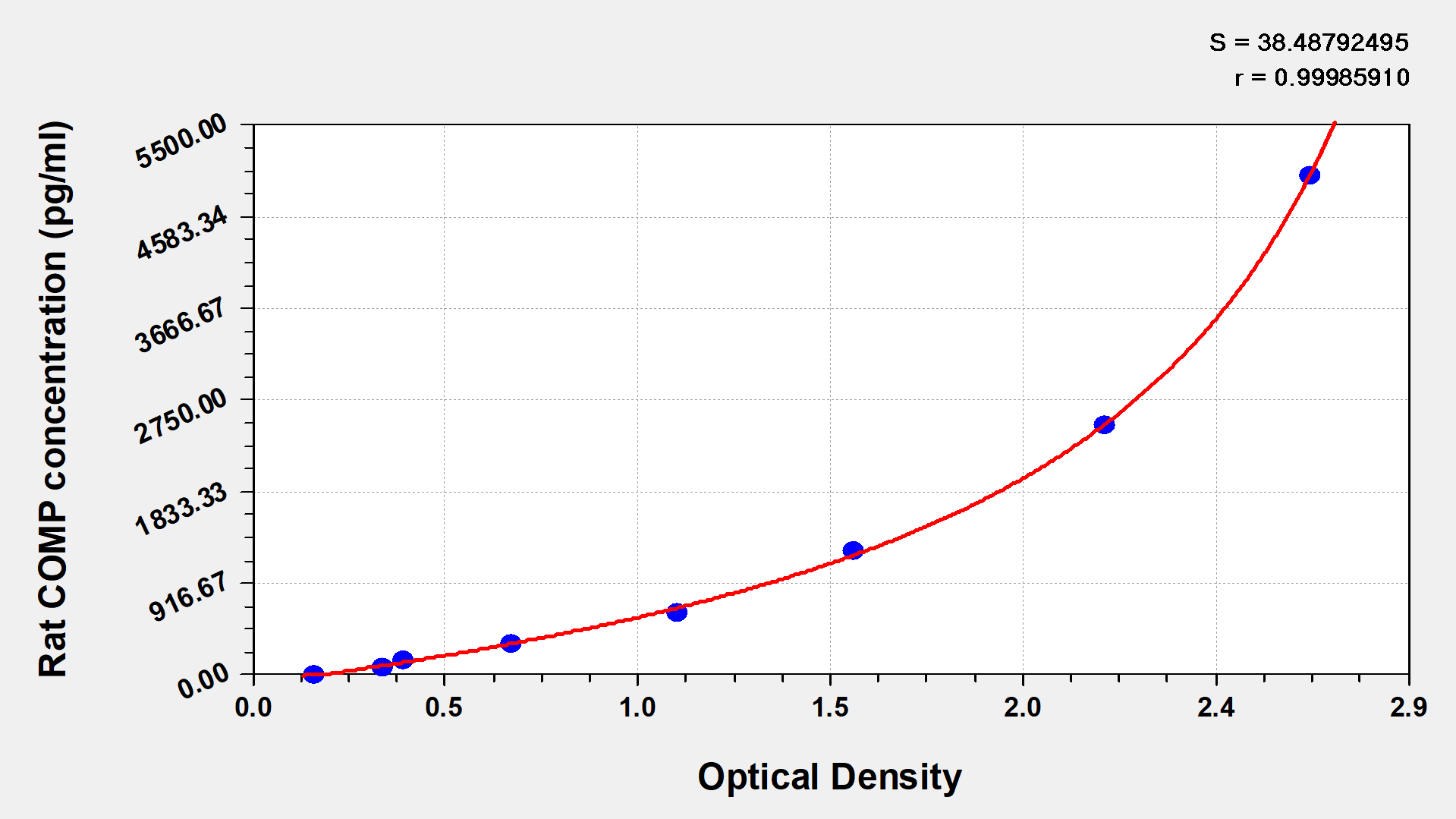The product CSB-E13833r is a ready-to-use microwell, strip plate ELISA Kit for quantitative analysis of rat cartilage oligomeric matrix protein (COMP) in biological samples, including serum, plasma, or tissue homogenates. This kit has undergone rigorous quality tests in multiple parameters, including specificity, sensitivity, precision, and lot-to-lot consistency.
The detection mechanism of this kit is based on the Sandwich-ELISA technique. COMP in the samples or standards are sandwiched between pre-coated COMP antibody and Biotin-conjugated COMP antibody. The COMP/pre-coated COMP antibody/Biotin-conjugated COMP antibody complex is labeled by HRP and then occurs a chromogenic reaction after the addition of the TMB solution. The color intensity is positively related to the COMP in the samples.
COMP, also known as thrombospondin-5 (TSP-5), is a matricellular protein essential for maintaining vascular homeostasis. It also plays a crucial role in cartilage and bone metabolism and is involved in arthritis. COMP preserves the contractile phenotype of vascular smooth muscle cells and prevents the formation of vascular neointima and vascular calcification after an injury. Model mice lacking COMP developed spontaneous dilated cardiomyopathy and heart failure. Evidence revealed that COMP is an endogenous thrombin inhibitor and negatively modulates hemostasis and thrombosis.




